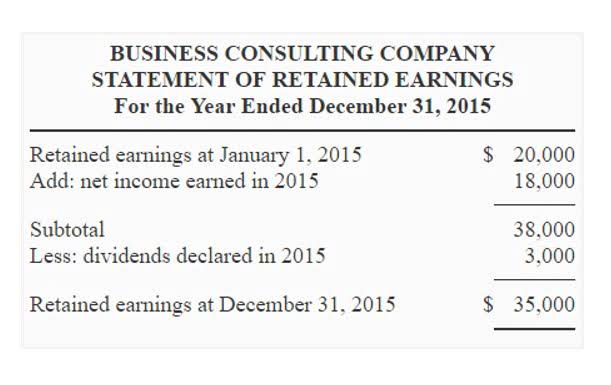Professional Disfectants Supplier
What Is Accumulated Other Comprehensive Income on Financial Statements?

It also helps determine the impact of future liabilities on unrealized profits. It includes unrealized gains and losses from different sources like foreign money values, pension plans, and certain types of investments. These don’t go into net income but still affect the company’s value. Comprehensive income is important because the amounts help to reflect a company’s true income during a specific time period.

📆 Date: 15-16 Feb 2025🕛 Time: 8:30-11:30 AM EST📍 Venue: OnlineInstructor: Dheeraj Vaidya, CFA, FRM
Comprehensive income refers to the unrealized profits and losses on your business’s available investments over a particular period of time. These figures allow you to measure the fair value and not the actual market value of your long-term investments in the business. This involves noticing both realized and unrealized financial parts. Understanding income bookkeeping and payroll services statement details is key for financial experts. Here’s a simple guide, including an example of how checking revenue and expenses reveals a company’s financial state. Financial statements give us a clear picture of a company’s financial health.
- On this basis only bridging and mismatch gains and losses should be included in OCI and be reclassified from equity to SOPL.
- One of the key changes was to require companies to present a single statement of comprehensive income, rather than separate statements for profit or loss and other comprehensive income.
- He is the sole author of all the materials on AccountingCoach.com.
- In 2007, the IASB (International Accounting Standards Board) published a revised version of IAS 1 that included some changes to the presentation of comprehensive income.
- AOCI and net income serve distinct purposes in financial reporting, offering complementary perspectives on a company’s performance.
What Are Operating Costs?
Similarly, the income statement records various sources of money that are unrelated to a company’s primary operations. This includes things like interest earned on company investments. Net income is what remains after you take your gross revenue and subtract all these expenses. It represents the actual profit your company has earned during a specific period. Net statement of comprehensive income income is a key measure of a company’s financial health and shows how effectively it’s managing its costs and generating a return on its activities. Although the income statement is a go-to document for assessing the financial health of a company, it falls short in a few aspects.

What insights can the statement of comprehensive income provide beyond the income statement?
He is the sole author of all the materials on AccountingCoach.com. For the past 52 years, Harold Averkamp (CPA, MBA) has worked as an accounting supervisor, manager, consultant, university instructor, and innovator in teaching accounting online. PwC refers to the US member firm or one of its subsidiaries or affiliates, and may sometimes refer to the PwC network. This content is for general information purposes only, and should not be used as a substitute for consultation with professional advisors. My Accounting Course is a world-class educational resource developed by experts to simplify accounting, finance, & investment analysis topics, so students and professionals can learn and propel their careers.

- This is due to the fact that their lottery wins have nothing to do with their employment or occupation, but they must still be accounted for.
- For instance, when available-for-sale securities are sold, unrealized gains or losses previously recorded in AOCI are reclassified to the income statement as realized gains or losses.
- Generally a long term liability account containing the face amount, par amount, or maturity amount of the bonds issued by a company that are outstanding as of the balance sheet date.
- On disposal, reclassification ensures that the amount recognised in SOPL will be consistent with the amounts that would be recognised in SOPL if the financial asset had been measured at amortised cost.
- Auditors work hard, following PCAOB standards, to make sure reports are accurate and reliable.
Keeping up with the International Financial Reporting Standards (IFRS) is a big hurdle. Not following it closely might mess up how financial statements are understood or compared. Adopting these steps into your financial routines can make income statement preparation accounting more accurate and reliable.
What is the Statement of Comprehensive Income?
Examples of items recognised in OCI that may be reclassified to profit or loss are foreign currency gains on the disposal of a foreign operation and realised gains or losses on cash flow hedges. Those items that may not be reclassified are changes in a revaluation surplus under IAS 16® , Property, Plant and Equipment, and actuarial gains and losses on a defined benefit plan under IAS 19, Employee Benefits. AOCI and net income serve distinct purposes in financial reporting, offering complementary perspectives on a company’s performance. Net income reflects revenues, expenses, gains, and losses directly attributable to a company’s core activities during a specific period.

- The income statement will reflect operational patterns from year to year, but it will not suggest the likelihood or timing of major other comprehensive income items being recorded in the income statement.
- An important metric that is available from the income statement of a retailer or manufacturer is the gross profit.
- By offering predictive value, you can plan, strategize your business, and prepare for the future.
- Comprehensive income connotes the detailed income statement, where we will also include income from other sources and the income from the main function of the business.
- It also helps predict how the market might change in the future.
The income statement lists the company’s income, costs, and the money it actually makes. It breaks down revenues, costs linked to doing business, and taxes. The bottom line shows if the company earned or lost money, and how much money it made for each share.
